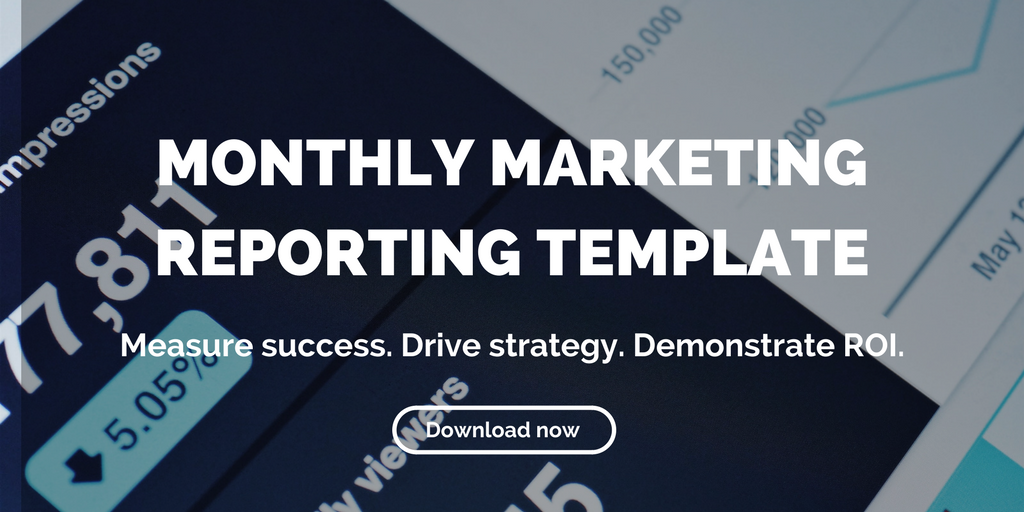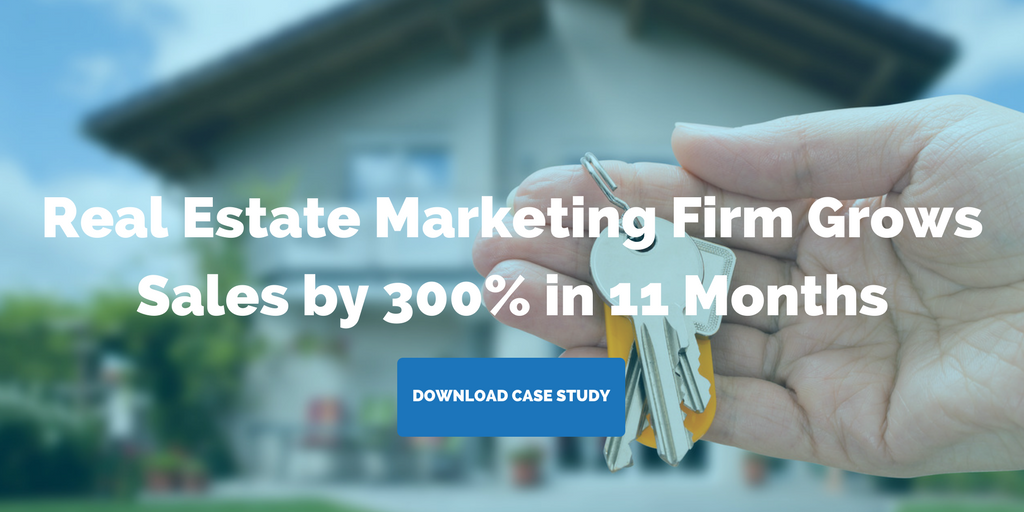Your search results for "C_HCADM_05 aktueller Test, Test VCE-Dumps für SAP Certified Technology Associate - SAP HANA Cloud Provisioning and Administration 👷 Öffnen Sie die Website ➡ www.itzert.com ️⬅️ Suchen Sie 「 C_HCADM_05 」 Kostenloser Download 👌C_HCADM_05 Online Prüfungen"

What Metrics Should You Track in Real Estate Marketing?
Our monthly marketing reporting template for real estate will help you measure success, drive strategy, and demonstrate ROI.
Traditional real estate marketing involved a lot of “post and pray.” That is, marketers would place ads in local publications, on billboards, and with other traditional media outlets and hope that buyers and tenants would read them and take interest.
With digital marketing, we can do so much more. Real estate marketers can measure the success of their efforts — if they’re tracking the right numbers.
Measuring success
To effectively sell or lease property, you need to take a comprehensive, data-driven approach to marketing. Metrics enable you to measure success, drive strategy, and demonstrate the ROI of your marketing efforts.
You need to know that what you’re doing is working (or not) so that you can adjust your marketing strategy as necessary. And you need a visual, executive-friendly way to show your bosses or investors that the marketing dollars you’re spending are paying off. We’ve got you covered.
Monthly marketing reporting template
We’ve created a monthly marketing reporting template just for real estate businesses. This template tracks your marketing metrics and generates graphs you can use in reporting and presentations.
Metrics captured in the template include:
- Total website visits
- Website visits by source
- Leads
- Leads by source
- Investors
- Investors by source
- Visit-to-lead conversion rate
- Lead-to-investor conversion rate
- Ranking
- Competitive analysis
The template (an Excel document) will save you time figuring out which metrics to track… not to mention, how to present them to your boss/investors. It’s very easy to use, but feel free to reach out to us if you have any questions or need us to walk you through it. We’re here to help.
Start tracking the right metrics in real estate marketing and improve your marketing efforts by downloading our Monthly Marketing Reporting Template below.
Related posts:
-
The Metrics You Should Be Measuring in Real Estate Marketing (Hint: Not Vanity Metrics)
-
Social Media Can Be a Strategic Weapon in Real Estate Marketing
- How Pay-Per-Click Helped This Property Get 54 Leads
Your search results for "C_HCADM_05 aktueller Test, Test VCE-Dumps für SAP Certified Technology Associate - SAP HANA Cloud Provisioning and Administration 👷 Öffnen Sie die Website ➡ www.itzert.com ️⬅️ Suchen Sie 「 C_HCADM_05 」 Kostenloser Download 👌C_HCADM_05 Online Prüfungen"

Marketing Trend: Marketing Automation for Real Estate
Real estate marketers can use marketing automation to drive efficiency and be more successful in earning and converting leads.
As your real estate brand grows, more and more tasks fall on your plate and digital marketing can seem daunting and time consuming. But marketers know the importance of a digital marketing strategy, so how to juggle these demands? The answer is automation.
HubSpot recently reported that businesses using marketing automation to nurture leads received a whopping 451% increase in qualified leads. So how can you reap these benefits? Let’s take a quick look at marketing automation for real estate.
What is marketing automation?
Marketing automation is the process of automating certain repetitive marketing tasks. It’s designed to support multiple channels, so your marketing efforts (and your brand) stay consistent across the board.
More and more people searching for apartments and condos are looking for a personalized experience. This makes marketers’ jobs increasingly more difficult as they have to produce relevant and informative content mixed with personalized messages. Marketing automation can help provide custom lead-nurturing content that helps convert prospects to buyers.
Examples of marketing automation for real estate
Automation can be used in a variety of ways throughout the buyer’s journey. Start with a documented strategy to outline exactly what outcome you’re hoping to produce. What do you want your marketing automation efforts to accomplish for your real estate brand? Top marketing goals for content marketers include converting contacts/leads to sales, growing website traffic, and increasing revenue.
After you identify your goals, you can find marketing automation tools that align. Here are some examples:
- Chatbots
- Social media scheduling tools
- Thank-you, welcome, and other triggered-by-an-event emails
- Event reminders
- Email workflows
Benefits of marketing automation
Save time
One of the most obvious benefits of marketing automation is saving time. Having the ability to schedule social posts, automate email workflows, and answer questions on your website via chatbot allows real estate marketers to stay relevant without sacrificing other responsibilities.
Build brand awareness
It’s important for customers to recognize your real estate brand. Brand awareness builds confidence in your properties and what you’re selling. Using marketing automation can get your brand in front of new audiences, as well as keep you on the forefront of prospects you’ve already engaged with. Through emails, social media posts, and paid advertising your brand can continue to build brand awareness while you’re focusing on other aspects of the business (or having lunch!).
Data-driven approach
Most marketing automation tools offer data to track your marketing efforts. This data can determine which marketing efforts are working and which aren’t. From workflow emails to push notifications, marketing automation software can streamline your strategies and make them more efficient.
Final Thoughts
Marketing automation can provide your leads with more personalized experiences. That will increase the chances that they’ll buy (or lease). But it won’t take up more of your time. In fact, it will free you up to provide value in other areas that can’t be automated (like content creation). It’s really a win-win.
Related posts:
- Real Estate Marketing Trend 2019: Influencer Marketing
- Our 6 Favorite Marketing Automation Tools for Real Estate Marketers
- How to Increase Leads with Chatbots
Your search results for "C_HCADM_05 aktueller Test, Test VCE-Dumps für SAP Certified Technology Associate - SAP HANA Cloud Provisioning and Administration 👷 Öffnen Sie die Website ➡ www.itzert.com ️⬅️ Suchen Sie 「 C_HCADM_05 」 Kostenloser Download 👌C_HCADM_05 Online Prüfungen"

Why Video Marketing is Such a Great Way to Sell Real Estate
Video is cost effective and allows marketers to increase brand awareness and generate leads. Here are tips to boost your real estate marketing efforts with video.
Highlights:
- Video marketing is an ideal way to connect with your target audience, improve your social media engagement, and generate leads.
- Marketing on Facebook and Instagram is all about finding the right balance between appealing to the personal while staying true to your brand.
- In the end, it’s all about generating leads—and finding ways to boost your efforts when you can.
Real estate marketers know and understand the power of video marketing as a part of their digital strategy. With 85% of all internet users watching video content monthly, it’s time to start understanding how video can boost your marketing efforts.
In our highly visual world, video marketing is an ideal way to connect with your target audience, improve your social media engagement, and generate leads. And best of all, video doesn’t require a large financial investment.
Here are three ways video marketing can to take your marketing efforts to the next level:
1. Establish your credibility and build your brand
We live in a highly visual world, particularly when it comes to digital marketing. Real estate marketing with video is an immediate and effective way to reach your target audience and show them what makes your brand and properties unique. Remember, you want clients to associate your brand and properties with something informative, necessary, and, yes, even fun.
If you leverage video marketing properly, you can strengthen your brand message, promote your name, and increase brand awareness. Sticking to content that abides by, or expands upon, your value proposition helps make this easy to achieve.
2. Up your social media game
Marketing on Facebook and Instagram is all about finding the right balance between appealing to the personal while staying true to your brand.
Use video on your social channels to engage with your target audiences. Think of these videos as introductions to your properties and your brand, while giving followers the opportunity to engage with you.
And social platforms are making it easier than ever for marketers to share video on their channels. From posting video on your Facebook page or Vimeo channel to creating videos for Stories, marketers have the ability to use social media to highlight their properties, as well as content with audiences.
3. Show you know the area using real estate video marketing
Whether your properties are rural, urban, or suburban, displaying knowledge of your location and community is crucial to cultivating credibility. Logan Link, a real estate marketer and agent, has capitalized on the power of video to help sell properties:
“To today’s buyers, falling in love with a property is less about square footage and fixtures—HGTV has taught us all that we can do things like update a kitchen. Now, it’s all about how the home and neighborhood will make them feel; what daily life could be like in this new place.”
Savvy marketers can use real estate video to demonstrate the culture and feel of the local neighborhoods, like popular restaurants and cafes. Don’t be afraid to take short videos (as simple as using your phone) to let followers know about upcoming events or festivals in the area. All of these videos will help viewers connect with the property’s location.
Final thoughts
As with any marketing endeavor, a crucial first step is a strategy. Video marketing is no different. A clear, documented video strategy for real estate, with measurable goals is crucial for success. In the end, it’s all about generating leads—and finding ways to boost your efforts when you can.
What tactics have you used to help boost your video marketing efforts?
Related posts:
- Infographic: Best Video Distribution Channels for Real Estate Marketing
- 6 Simple Tools for Creating Animated Real Estate Marketing Videos
- Developing Your Real Estate Brand with Video Marketing
Your search results for "C_HCADM_05 aktueller Test, Test VCE-Dumps für SAP Certified Technology Associate - SAP HANA Cloud Provisioning and Administration 👷 Öffnen Sie die Website ➡ www.itzert.com ️⬅️ Suchen Sie 「 C_HCADM_05 」 Kostenloser Download 👌C_HCADM_05 Online Prüfungen"

This is How Often Real Estate Companies Should Post on Social Media
Remember these best practices when deciding how often your company or property is going to post on each of these social media platforms.
Creating engaging, relevant content in a strategic and consistent manner raises brand awareness for your property and drives sales. But as BuzzFeed’s Jonathan Perelman said, “Content is king, but distribution is queen and she wears the pants.”
It’s not enough to just create interesting and pertinent content; you have to put it out there to reach your target buyer or tenant. Moreover, the content needs to be delivered consistently over time, at the right time, and in the right place.
With social media networks changing daily, it’s hard to keep up with where to distribute content, much less how often. Countless studies have attempted to solve the social-media-frequency equation. And while audiences vary across price points and regions, best practices give us some general guidelines.
Here’s our assessment of social media posting frequency.
How often to post on social media
Twitter: 40 per day*
*Big caveat here: 40 tweets per day is what we’ve found works for us and most of our clients. Let me explain.
Socialbakers suggests that posting to Twitter three times per day is the ideal frequency for brands. Buffer posts to Twitter 14 times per day. Fronetics, our supply chain brand, happens to tweet 40 times per day. So recently, after seeing the Socialbakers and Buffer stats, we conducted a month-long experiment to see how dropping our posting frequency closer to their benchmarks would affect our engagement.
As we’ve written about before, it wasn’t pretty. We confirmed that our engagement, web traffic, lead generation, and other key performance indicators are at optimal levels when we tweet 40 times per day.
Your company, or your marketing partner, should conduct due diligence and determine what the right frequency is for your business. For Fronetics Real Estate, we’re currently tweeting 6-10 times a day, working up to more as we are able. The strategic growth of your social media program is also an important element to consider when determining a posting frequency that’s best for your company or property.
Facebook: 1 per day
Most companies find that posting 1 time per day is their sweet spot for most social media networks. Facebook is no exception: The network’s algorithm values quality over quantity, so the more engaged your followers are with your content, the more likely they are to see your posts. This also means that posting content that does not facilitate engagement can actually decrease the likelihood that followers will see your posts.
One sure way to encourage disengagement is by overwhelming your audience. We all have that friend or company we follow that posts too much — don’t be like that person.
Remember that the lifespan of a Facebook post (about 5 hours) is significantly longer than that of a tweet. So you don’t need to provide a constant stream of content to get your audience’s attention. Your focus should be distributing the most relevant, interesting content you can, at a time when most of your audience will be on Facebook.
Instagram: 1-2 per day
There’s an unwritten rule among Instagramers that a user shouldn’t post more than once per day. We generally agree for the same reason we don’t think brands should post more than once a day to Facebook: Don’t overwhelm your audience because the lifespan of your posts is pretty long. In fact, a Union Metrics study found that many Instagram posts continue to receive engagement for days — even weeks — after posting.
Most brands end up posting 11-20 posts per month. If you focus on compelling images with strategic messages, that’s probably a good benchmark to stick with. It’s important to note, however, that another Union Metrics study suggests posting consistency is more important than frequency. Again, taking the time to test the Instagram posting frequency that works best for your business is a worthwhile endeavor.
LinkedIn: 1 per workday or less
A more formal and technical social media network, LinkedIn is a platform for business-related content. But users also seek information about potential investments and market information — and that is where your opportunity lies.
Consider posting on LinkedIn only during the workweek, or even less. To provide the most value for your LinkedIn followers, content should be less promotional and more heavily focused on market trends and insights. Followers will come to consider your company or property as a go-to resource about the real estate market, local amenities and attractions, and investment opportunities.
At the end of the day, optimal posting frequency for your company or property rests heavily on the audience you want to reach. Experimenting with different social media networks and posting frequencies will give you greater insight into your ideal distribution approach. With these best practices as a guide, let your own analysis be your guide. Maintaining a dynamic and fluid posting strategy will ensure that your social efforts drive followers to action, rather than drive them away.
Related posts:
-
When Traditional Real Estate Marketing Methods Stop Working, Try Digital Marketing
-
6 Signs It’s Time to Consider Outsourcing Your Real Estate Marketing
-
5 Tips for Building a Successful Real Estate Social Media Marketing Program
Your search results for "C_HCADM_05 aktueller Test, Test VCE-Dumps für SAP Certified Technology Associate - SAP HANA Cloud Provisioning and Administration 👷 Öffnen Sie die Website ➡ www.itzert.com ️⬅️ Suchen Sie 「 C_HCADM_05 」 Kostenloser Download 👌C_HCADM_05 Online Prüfungen"

3 Social Media Mistakes Real Estate Companies Still Make
Social media is a valuable tool for real estate businesses, but only if they use it to their best advantage and avoid these three common mistakes.
Highlights:
- By 2019, there will be an estimated 2.77 billion social media users around the globe.
- It’s imperative for real estate businesses to have a clear strategy that includes types of content, frequency, and pillar topics.
- Real estate companies need to focus on creating content that leaves their users wanting more.
As many as 81% of small and medium businesses use a social platform. And we all understand why. By 2019, there will be an estimated 2.77 billion social media users around the globe. That’s a lot of potential customers.
So, there’s no question as to why real estate companies are jumping on the social media bandwagon. And there’s no disputing social media is an effective way to increase brand awareness and generate leads. But it can be fairly useless if your company isn’t doing it right.
Top three social media mistakes real estate companies still make
Mistake #1: Using objectives instead of strategy
Social media platforms are continually making changes and updates to improve the user experience. In order to weather these changes and keep your audience engaged, it’s imperative to have a clear strategy that includes types of content, frequency, and pillar topics. Posts should reflect your real estate brand, so make sure posts follow style guidelines and reflect your specific tone.
A strategy will also help prove ROI. Social Media Examiner’s 2018 Social Media Marketing Industry Report found that only 44% of marketers agree that they know how to measure social media ROI. That means two-thirds of marketers don’t know whether or how much their marketing efforts are paying off when it comes to the use of social media. A strategy that incorporates defined goals, tracking and measuring will help prove data-driven ROI and improve your social media presence.
Mistake #2: Using the most popular social media platforms
Not all social media platforms are created equal. In fact, all social media channels have different qualities that make them appeal to specific audiences. Start by identifying which platform your target audience is the most likely to seek out. For example, 81% of millennials view their Twitter account on a daily basis. If your company is looking to capture millennials as leads, your social media efforts should certainly include Twitter.
Once you’ve determined where you should be posting, concentrate on creating content that caters to those specific platforms. Lots of companies post the same content across all of the apps they use. We understand how easy that is for marketers, especially with automation tools. But the foundation of social engagement is authenticity, something that is hard to achieve when posts are the same across all channels. Work to create content — including video and images of properties — that caters to specific platforms to build brand awareness and loyalty.
Mistake #3: Promoting instead of connecting
Social media is all about engagement. Users don’t want to engage with brands that are pushing their properties. Users want informative, interesting, and yes, even fun content. Real estate companies need to focus on creating content that leaves their users wanting more.
Companies that are succeeding on social media are finding innovative and creative ways to relate to users. When you engage and get users involved in your story, you create long-lasting customer relationships. Storytelling creates an emotional bond with your company and drives brand loyalty.
Greg Hadden, executive creative director of Motive Made Studios, sums up the power of connecting with users: “What often gets lost is the fact that good storytelling is potent stuff. It has the power to make people want to believe and to belong, which is the goal of all storytellers. We’re all selling something, be it an idea, an exploration of the human condition, or say, a vacuum cleaner. It’s no mistake perhaps that good stories often create products.”
Final thoughts
Social media platforms are a powerful resource that can help your real estate business grow. But they have to be used correctly. Creating a documented strategy will help shape your brand’s social media presence and give you milestones to test and tweak your progress. Need help creating a social media strategy? Let us help.
Related posts:




